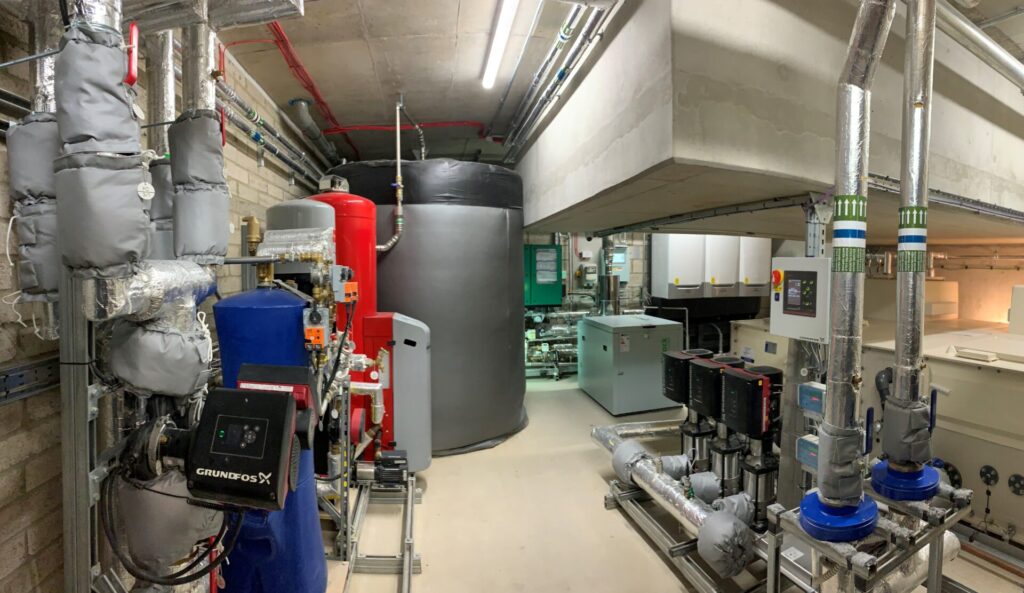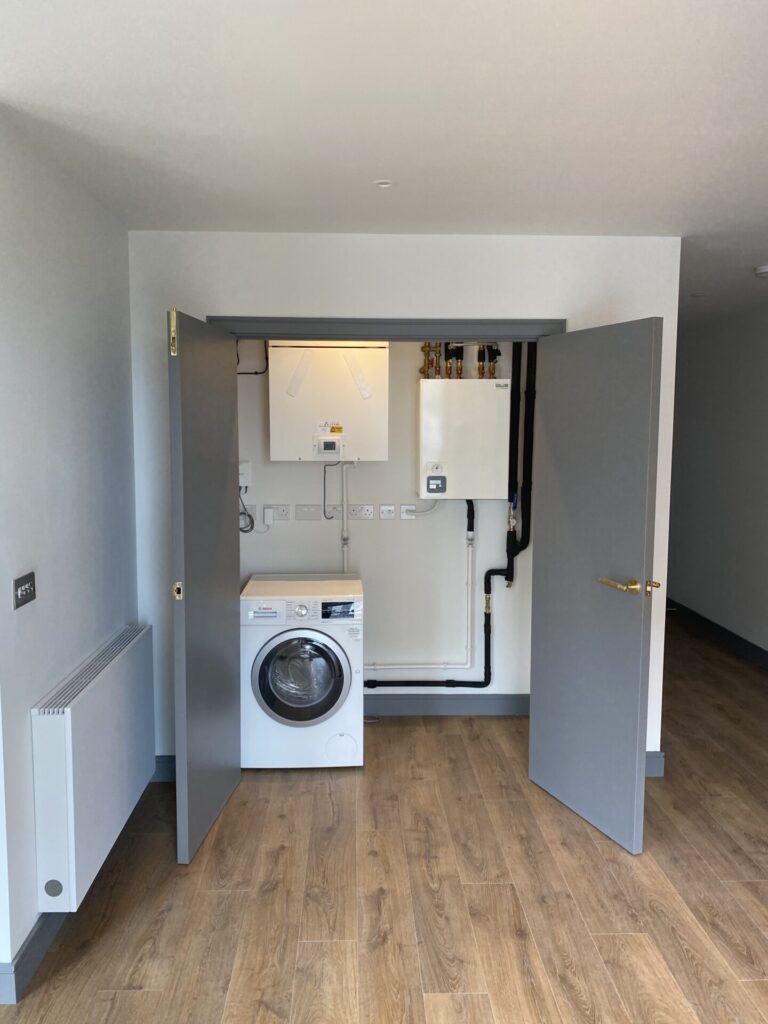Heating Networks/District Heating
One of our niche talents here at Helec is our ability to offer a full turnkey solution for you.
We can design, construct off-site, then install & commission your packaged solution, along with a peace of mind maintenance package in order to deliver quality communal heating, via our “EnSmart” systems for both domestic and mixed commercial properties that are seeking enhanced ways to reduce CO2 emissions and improve their energy efficiency.
No aspect of this task is out of our skill set as the Helec team can assist with a full turnkey package, incorporating everything from assessing the feasibility, create the design, through to taking the build programme right through to the site installation.
What Is A Communal Heating System?
A communal heating system, sometimes referred to as a district system, is a single point of delivery, usually an energy centre, responsible for providing & delivering domestic hot water and thermal space heating across many residential apartments, mixed commercial & office spaces, all from one single location.
This single sole plant room (energy centre) will be the primary service to all other dwellings and is commonly found servicing todays attractive high rise apartment blocks & residential housing schemes, as well as many mixed commercial retail & office blocks.

Pre-packaged plant room in Whetstone, N London
Examples of working communal heating sites built, installed & commissioned by Helec can be viewed here
What Are The Benefits Of A Communal Heating System?
In comparison with premises where each dwelling, whether that be a residential apartment, or an office, has a single gas fired boiler, or a heating appliance in each, collectively will use more energy and have an impact on the environment. Whereas a communal heating system will use much less energy overall.
When you also add the reduced carbon / renewable source of energy being delivered through cogeneration (CHP) methods into consideration it becomes a valuable cost effective solution. There is also the secondary but interwoven benefit of a reduction in carbon emissions from a single source over multiples appliances.
This brings us nicely on to Combined Heat and Power (CHP)
A CHP unit(s) produces thermal energy and operates as the ‘lead’ boiler in a plant room generating & providing a calculated thermal load for the sites space heating and domestic hot water whilst simultaneously generating onsite available electrical power, thus further reducing building & stakeholder running costs.
Other benefits include helping businesses meet their BREEAM targets and improving performance efficiencies over longer lifetime expectations.
Also, for social landlords and affordable housing providers, the need for intrusive access to tenants dwellings for periodic gas safe boiler servicing & maintenance schedules are no longer required.
Communal boiler systems provide significant carbon reductions compared to other multiple energy sources. The table below compares district heating scheme emissions to single domestic heating systems.
| District heating | CO2 Emissions (G/KwH) | Individual heating | CO2 Emissions (G/KwH) |
| Gas CHP | 10 | Gas Boilers | 260 |
| Biomass | 30 | Electric Heating | 850 |
| Oil | 20 | Oil Boiler | 350 |
| Biogas CHP | 360 | Heat Pumps | 300 |
Communal bolers also offer other advantages including:
- Reduced maintenance and increased lifespan with a typical system lasting 25 years compared to 15 for gas boilers.
- Combined Heat and Power reduces energy costs to individual properties
- Removing multiple gas boilers also reduces, or circumvents required annual gas safety inspection costs.
How Do Communal Heating Systems Work?

In most domestic apartment blocks, flats & general dwellings today you will usually find a type of Heat Interface Unit (usually located in a utility cupboard) which is being fed from a single point energy centre.
Most HIU units are designed to provide & deliver ‘comfort’ space heating (CH) through either wall mounted radiators, or via underfloor heating and also provide instantaneous domestic hot water (DHW) via the buildings main primary hot water & cold water supply circuits, once again usually supplied from a single point energy centre/boiler plant room.
(Basically, this HIU will provide the end user with the same hydronic control as if they had there own boiler & hot water tank in situ)
Note: HIU’s have been around for some time now and there are many different types of models out there with varying levels of hot water / supply services.
In compliance with the latest UK regulations required for installation of Heat Interface Units, the incoming HIU CH & DHW primary water supply pipes should be fitted with energy (heat) meters which monitor & allow accurate billing precisely and record ONLY the amount of energy used by the end user.
This means each apartment, or office space area should only be billed for the exact amount of energy (kWh) they consume via paymenst ssuch as “pay as you go” top up card options, or through an agreed energy billing monthly contract.
Contact Us
If you want to know more, or have a specific enquiry that one of our friendly team can assist you with, please do not hesitate to contact us at your earliest convenience.
